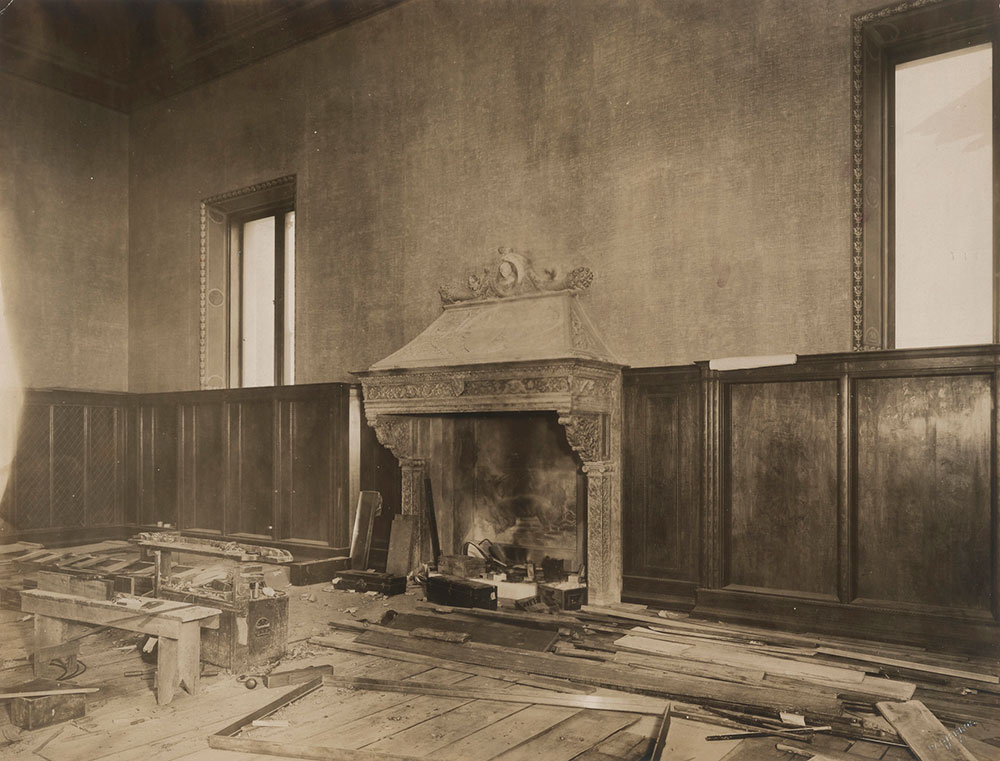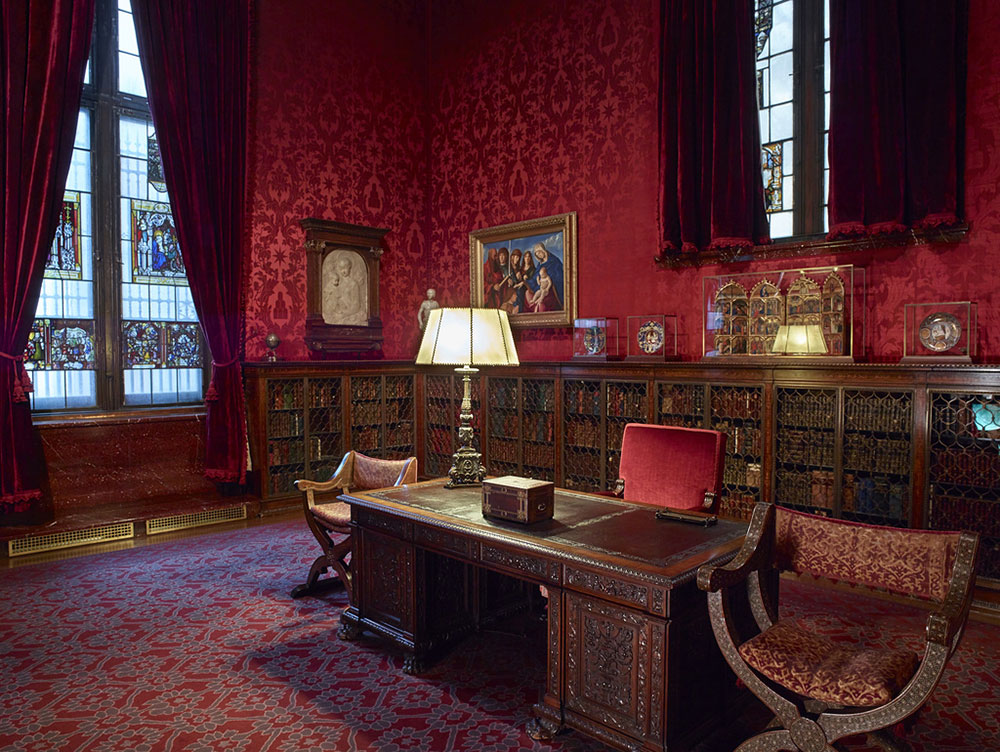Stop 10. 1906 Library Building

Colin B. Bailey, Director
Situated on a residential block among its urban neighbors, J. Pierpont Morgan’s Library appears strikingly distinct yet surprisingly at home. Architect Charles Follen McKim drew on Italian Renaissance architectural precedents to design an American building that conveyed power and permanence, intimacy and grandeur. “Above all,” he told his client, “we are desirous that the design shall represent your views and reflect your judgment, in order that it may become a worthy monument to your munificence and public spirit.”
The building has remained the heart of the Morgan Library & Museum. The interior was renovated in 2010: the marble was cleaned, the displays were reimagined to allow visitors to engage more fully with the spaces and their history, and new, technologically advanced lighting was installed. In 2020–2022, the exterior of the building was restored: the roof was replaced, the foundation waterproofed and the marble and ironwork cleaned and restored. At the same time,the surrounding landscape and lighting were reimagined. These campaigns have restored the building to its original splendor, encouraging visitors to learn more about the creation and history of the Library.
Stop 11. The Builders

Jennifer Tonkovich, Eugene and Clare Thaw Curator of Drawings and Prints
While we often speak of the building that Morgan and McKim made, it is more accurate to say there were hundreds of people, their names largely unknown to us today, who built this “bookman’s paradise.”
Charles Follen McKim, the lead architect and creative force behind the building, relied on a team of proficient draftsmen in McKim, Mead & White’s studio to create the design drawings that articulated his vision. He engaged Charles T. Wills as general contractor and a host of specialists to build and ornament the Library. Just after construction began in 1903, a series of strikes brought the entire New York building industry to a standstill in April. Progress on the Library was delayed as workers sought improved conditions and better pay. Construction resumed in November and work was completed three years later, thanks to the efforts of the teams of artisans and contractors, many from workshops headed by immigrants, who contributed their labor and creativity to the project.
Stop 12. The Decorators

Jennifer Tonkovich, Eugene and Clare Thaw Curator of Drawings and Prints
Morgan purchased or commissioned the works in his study and library; however, they were created or sourced by a wide range of craftsmen and dealers. The London firm Cowtan & Sons designed the furniture based on Renaissance examples in the Victoria and Albert Museum, near Morgan’s London home. The British chaplain and art-dealer Robert Langton Douglas searched for Italian paintings for Morgan’s Renaissance villa, while Morgan’s trusted Paris dealer Jacques Seligmann offered the banker the finest objects and bronzes in his inventory.
Not everything, however, was as rare and expensive as it might seem. The dealer Stefano Bardini had fragments of an earlier wood ceiling, but the one you see in the room was largely executed by craftsmen in 1905 based on the historic model. The contemporary artist James Wall Finn gave the ceiling a coat of paint, which was artificially aged to create the appearance of an old ceiling. Likewise, the great fireplace mantel contains a small lintel that was sold as a fifteenth-century object by Bardini but was likely a modern creation. It is embedded in a stone and concrete surround created in 1905. Ultimately, Morgan was practical in his expenditures and creating this Italianate interior was the work of decorators as much as the great collector.